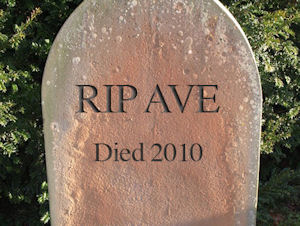
On 17 November, the International Association for Measurement and Evaluation of Communication (AMEC) discussed future PR measurement strategies at the joint AMEC/PRSA London Measurement Conference. The leaders of four trade bodies showed their agreement that measurement must be a strategic discipline at the heart of public relations.
Barry Leggetter, executive director at AMEC, says: “It has taken time to get to this point. But it was worth the wait to get the support of leaders of the PRSA, PRCA, CIPR and AMEC at the conference. What we need now is single-minded focus to translate the momentum we have and turn it into operational practice.“
Leggetter says that the next steps are:
1. Running practical workshops for PR professionals on how to use the new AMEC metrics.
2. Gaining more high-profile client evangelists like Andre Manning, vice president and global head of external communications at Royal Philips Electronics.
3. Embedding measurement in PRCA and CIPR member initiatives.
4. Urging awards organisers to make programme measurement a main judging category for all industry award schemes.
AMEC is developing new awards guidance outlawing the use of AVEs as the sole measure of programme performance in industry award schemes. Although Leggetter says that this will not appeal to everyone, AMEC will lead by committing to this approach in its own awards scheme for 2011.
Most PROs seem to hope that this conference will finally sound the death knell for AVEs. Francis Ingham, chief executive of the PRCA says that last week’s summit should be recorded as the afternoon the industry finally got its act together. Ingham adds: “It's certainly been a long time in coming – I dread to think how many trees have died as different organisations have produced their own different guides. Why I'm confident last week's event will break the mould is that the key organisations have finally come together and agreed a common route forward. For our part, we're going to embed evaluation best practice in our Consultancy Management Standard and in our awards – putting our money where our mouth is, one might say. I hope others will do the same. If we can maintain that sense of unity going forward, then there's no reason why we can't crack the problem.”
Finding a way to evaluate PR has never been easy, but many are unhappy with previous ways that have been used to measure the effectiveness of PR campaigns. Tom Watson professor of PR at Bournemouth University says, “No-one really believes that there is a standard PR project, so why should there be a standard measurement? I'd suggest that everyone considers this new rational approach to PR measurement which is supported by practitioners, academics and evaluators from around the world. It also denies a single measurement method and says AVEs are not a legitimate measurement.”
Philip Lynch, evaluation director at research firm Kantar Media, also believes that AVEs are outdated and the challenge is to find new measures that cover social media and that make sense to clients: “This challenge is becoming more apparent as we move into the social media space, where there is no accepted value for basic audience/user numbers. It creates a sense of confusion among clients and undermines credibility. Online advertisers and media buyers are working towards standardising online audience figures, and evaluation should be doing the same.
“Further, it would be useful for us to establish what the key benchmarks are in terms of message delivery, engagement and favourability. It is not helpful when individual agencies devise proprietary matrices or indexes using qualitative measures in combination. They do this with the promise of delivering a definitive outcome for communications effectiveness. But I would question whether such fixed methods can meet the individual requirements of clients. Certainly, the systems I am aware of have not developed over the years and in some cases are out of date. The approach is too prescriptive and more often than not it just confuses clients. It does not transfer into the real world very easily, less so a board report, where the demand is for clear data, clear insight and clear conclusions.”
Some further reading:
Here is the COI's 2009 report into the Standardisation of PR Evaluation. It outlines some pretty robust theory on how to measure PR. If you wanted a platform on which to base your PR measurement, this seems like a decent place to start. Obviously you'd need to customise it for your own markets/circumstances.
PR Masterclass: The Intersection of PR and GEO
Join PRmoment for a Masterclass featuring 10 of the industry’s foremost experts. You will walk away with a clear, actionable strategy for adapting your content to an AI-first search environment.
Taking place on Wednesday 25th February in London, both virtual and in person tickets are available.
Early bird ticket sale ends Friday 9 January.
PR MasterclassIf you enjoyed this article, sign up for free to our twice weekly editorial alert.
We have six email alerts in total - covering ESG, internal comms, PR jobs and events. Enter your email address below to find out more:









